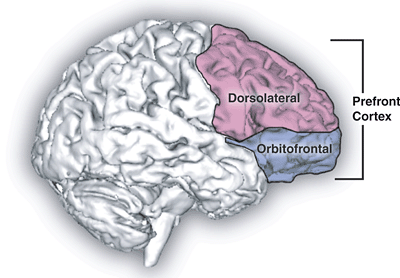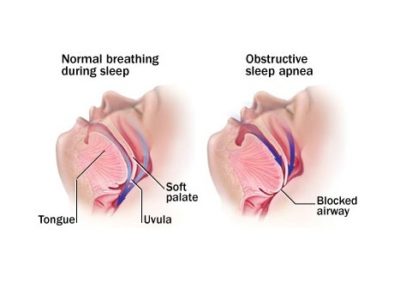
Article topic: Genito-pelvic pain/penetration disorder (GPP/PD)
Author name: Batool AlQadri
Editor name: Ihda Mahmoud Bani Khalaf
Reviewer: Ethar Hazaimeh
Keywords: Female sexual disorders, Pelvic pain, Vaginismus, Dyspareunia, libido.
Introduction
Genitopelvic pain/penetration disorder (GPP/PD) was recently added to the DSM-5 criteria in 2013, to include the previously named female sexual disorders “vaginismus” and “dyspareunia”. This disorder might be explained by patients as “pain or difficulty during intercourse”, clinical assessment of this complaint includes medical history, sexual history, and occasionally a physical examination.
This article addresses the fact that GPP/PD is multifactorial, explains these factors’ role in contributing to it, clarifies the psychiatric and biological analysis of the disorder, shows its key signs and symptoms along with suggesting multiple methods of treatment which include non-medical, medical, and surgical options.
Overview
Genitopelvic pain/penetration disorder (GPP/PD) is a sexual disorder in females due to multiple psychological, biological, and social etiologies. It’s considered a broad category that includes both vaginismus and dyspareunia.1
Vaginismus is defined as recurrent or persistent involuntary spasms of the vagina’s outer muscles which prevent penetrative sex, vaginismus is further classified as primary; which means that penetration has never occurred before, and secondary; meaning that penetration has been possible before. It also can be global under whatever circumstances or situational under specific ones. 2
Dyspareunia on the other hand is defined as pain just before, during, or after sexual intercourse leading to decreased interest and orgasmic pleasure in sexual behavior. 3
Etiology
GPP/PD is a complex disorder and not purely psychological, it must be viewed from other perspectives too including biology social relationships, and background. 4
The biological perspective states that mast cell activation and hypersensitization in the long-term lead to the proliferation of nociceptors which eventually lead to increased sensitivity to the painful stimuli -which is also known as hyperalgesia. 21 In addition, genital infections, decreased vaginal lubrication and mechanical trauma are all important risk factors contributing to GPP/PD.4 The psychological perspective mainly points to the fact that the accompanying depression and anxiety symptoms in most of cases can lead to GPP/PD.4
Epidemiology
Unfortunately, GPP/PD is under-researched worldwide due to the social stigma arising from cultural and religious beliefs concerning female sexual disorders and the patients’ embarrassment of discussing their sensitive symptoms with the health providers leading to misdiagnosing and mistreating of those disorders. 20,22 Studies show that there is a relationship between GPP/PD and sexual abuse, although not physical abuse. 23
Around 14-34% of premenopausal women are affected, their pain is eight times more accidental than chronic and usually associated with comorbidities such as endometriosis, irritable bowel syndrome (IBS), fibromyalgia, and postictal cystitis. Furthermore, psychiatric conditions such as childhood trauma, dissociative symptoms, and inadequate sexual education have been reported among patients.5,6,7 Studies regarding racial differences in patients are rare although some show that black women are 2.15 times more affected than white women.8
Symptoms
- Pain or fear of pain upon vaginal penetration – of a penis or any other object like a tampon or even a speculum during gynecological physical exam – is the defining symptom of the disorder. 11
Generally speaking, this pain is reduced in intensity if the patient has strong beliefs that she is able to overcome it, in addition to the pivotal role of her partner by avoiding over-focusing on the issue but rather promoting adaptive coping techniques with her pain, leading to a higher level of satisfaction in her sexual relationship. 24
The woman herself should have thorough acknowledgment of the female’s anatomy, physiology, sexual education, also understanding of any previous sexual experiences especially if any abuse or feelings of shame are involved. 12
On the other hand, the pain is intensified when the patient anticipates it, she will enter a vicious cycle of more and more pain during any attempts of vaginal penetration and her vaginal mucosa will be more prone to abrasions, tears, and inflammation due to the feedback inhibition of both the mental and physical sexual arousal, thus decreasing vaginal lubrication, vulvar congestion, pelvic muscle relaxation, and sexual pleasure. 9
- Decreased Libido (sexual desire).
- Anorgasmia (difficulty in reaching an orgasm).
- Decreased arousal: lack of somatic responses, lack of excitement and lack of vaginal and clitoral enlargement.
- Hispareunia: male partner pain after intercourse usually after female reconstructive surgery.10
Signs
Genital examination is essential in diagnosing GPP/PD, although it can be difficult due to pain and discomfort, the following might be noticed during the exam:
- Vaginal Dryness.
- Pelvic mass tenderness during bimanual exam.
- Vaginal agglutination: fusion of vaginal walls above hymen.
- Reduced or increased sensitivity during Q tip touch test.
- Vulval gaping or non-coaptation at rest.10
DSM-5 Diagnostic Criteria
Persistent or recurrent difficulties with 1 or more of the following:
- Vaginal penetration during intercourse.
- Marked vulvovaginal or pelvic pain during intercourse or penetration attempts.
- Marked fear or anxiety about vulvovaginal or pelvic pain in anticipation of, during, or as a result of vaginal penetration.
- Marked tensing or tightening of the pelvic floor muscles during attempted vaginal penetration.
To be diagnosed with GPP/PD, one of the aforementioned requirements must be met, together with clinically substantial discomfort that affects the sexual life quality of the patient, is not explained by any other medical disorder, and has persisted for at least six months. 11
Before Diagnosing a patient with GPP/PD, physicians should look for and treat medical causes of genital pain, including 20
- Infections: Pelvic inflammatory disease, sexually transmitted infections, vaginal candidiasis.
- Dermatological conditions: lichen planus, skin allergy (e.g., to semen)
- Pelvic neoplasms.
- Structural causes: Endometriosis, Leiomyoma, imperforated hymen, vaginal agenesis.
- Hormonal disorders: oophorectomy, menopause, hyperprolactinemia, anorexia.
Treatment
An essential point to be considered in treating GPP/PD patients is that it’s individualized, which means that each patient should be assessed thoroughly by a physician before deciding her specific treatment plan starting from the least to the most invasive methods: 20
First: Non-pharmacological
- Female sexual education: it is greatly helpful for the patient to study her body anatomy, physiology, and sexual cycle; this will help her to understand what to expect from her partner during sexual intercourse.
- Lifestyle modification: such as management of mood disorders, adequate physical exercise, and avoiding douches and irritants.12
- Weight loss and focusing on low oxalate diets such as fruits, vegetables, and proteins.
- Bibliotherapy: which involves reading creative books and stories and watching educational videos is proved to reduce the patients’ anxiety.13
- Pelvic muscle exercise: this is achieved by gradually lowering anxiety related to penetration by increasing awareness of the pelvic muscles, enhancing relaxing techniques, restoring tone, and delivering stretching stimuli at the introitus.
- Psychotherapy:
- Cognitive Behavioral Therapy (CBT): emphasizes on treating and dealing with the patient’s thoughts that negatively impact her sexual pleasure.
- Mindfulness Therapy: it teaches the patient how to be fully relaxed in the moment without having any unwanted automated responses.
Those two psychological methods are used and studies show that they are equally beneficial.14
Second: Pharmacological
- Topical therapies on the vaginal area: such as essential arousal oil, vulvar non-hormonal soothing cream, and prostaglandin E1 analogues to dilate genital blood vessels. 15
- Antidepressants: Tricyclic antidepressants and Bupropion specifically showed improvement in sexual desire in women with and without depression.16
- Vaginal estrogen: especially if the patient has vaginal atrophy and dyspareunia.16
- Exogenous testosterone in postmenopausal women increases their desire, but patients should be warned that is not always available in all countries, also it is not FDA-approved and not fully studied to show its exact benefits and side effects in the long term.16
- Selective estrogen receptor modulator: Ospemifene acts as an estrogen receptor agonist/antagonist in selective tissues, and helps in decreasing dyspareunia, especially in postmenopausal women. 17
- Botox injections: works on the nociceptors to create temporary localized muscular paralysis that lasts for three to six months, making it a good option for women who struggle with painful pelvic floor hyperactivity.18
Third: Surgical methods
- Pelvic reconstructive surgery for genital prolapses and urinary incontinence patients.19
- Vulvar vestibulectomy: the removal of the vestibular mucosa is the most invasive procedure so it is the most prone to complications and the last one to be tried.20
Conclusion
Genitopelvic pain/penetration disorder (GPP/PD) is a female sexual disorder that includes both vaginismus which is defined as persistent involuntary spasms of the vagina’s outer muscles and dyspareunia which is defined as pain before, during, or after sexual intercourse. The disorder is multifactorial; with psychological, biological, and social factors in its background, its prevalence varies among women with other co-existing medical disorders and there are some racial differences.
Patients usually present with pain upon penetration, decreased libido, and anorgasmia. Upon examination vaginal dryness, tenderness, and abnormal Q tip sensation test. Treatment is individualized and usually starts from the least invasive methods including lifestyle modification, psychotherapy, and pharmacological options to the most invasive methods like surgical ones.
References...












Addressing the multifaceted nature of Genitopelvic Pain/Penetration Disorder (GPP/PD), this comprehensive article meticulously outlines the various factors contributing to this condition while shedding light on the diverse array of symptoms, diagnostic criteria, and treatment options available. It not only provides a detailed overview but also emphasizes the individualized approach required for effective patient care, ranging from non-medical interventions to surgical methods. This holistic perspective offers a crucial understanding of the disorder, paving the way for more tailored and effective treatment strategies, underscoring the importance of considering the psychological, biological, and social aspects of this condition for a more comprehensive approach to patient care.
Thank you so much for this kind review.
We highly appreciate your delicate understanding of the disorder, we also hope that this article was helpful.